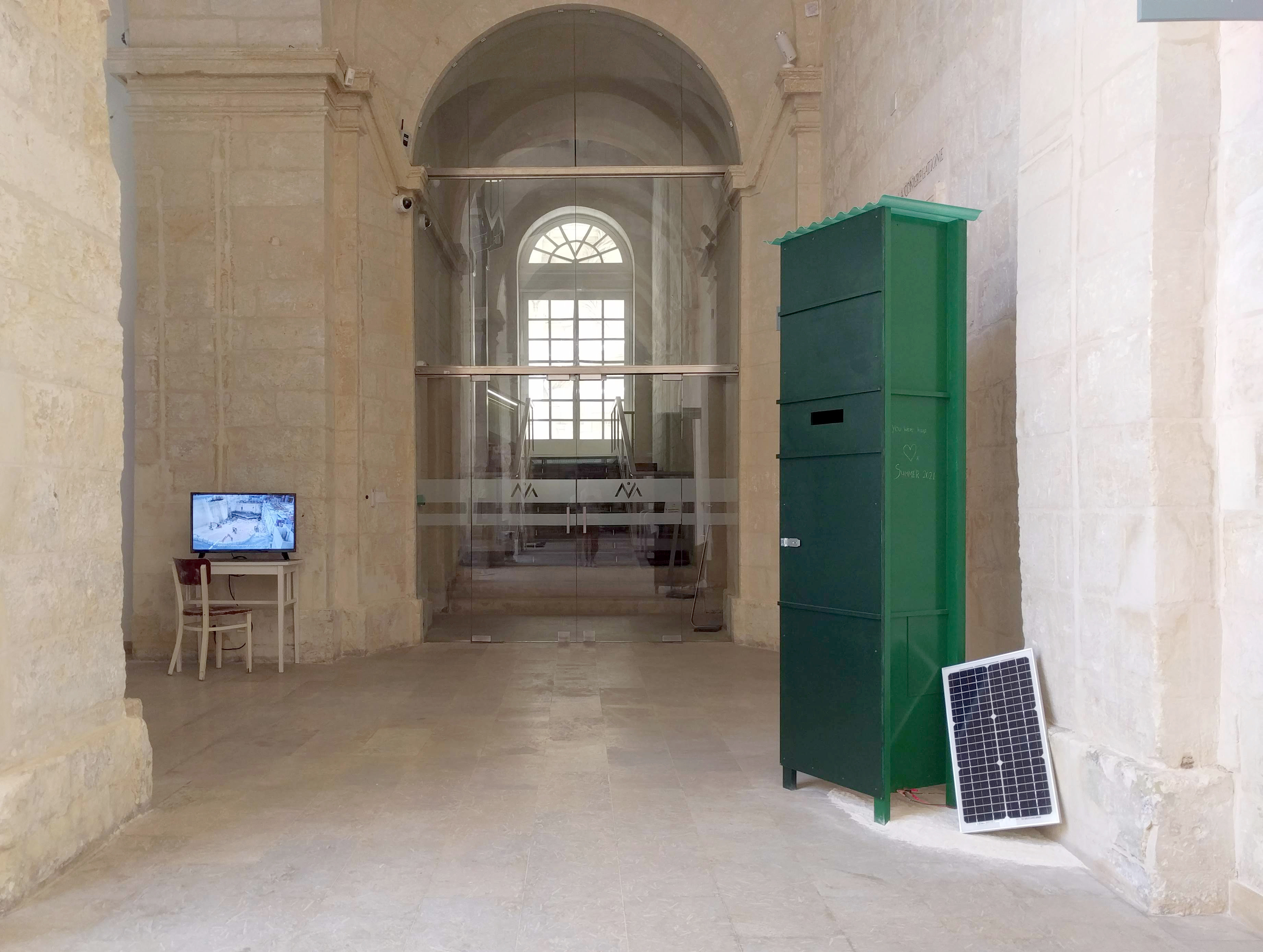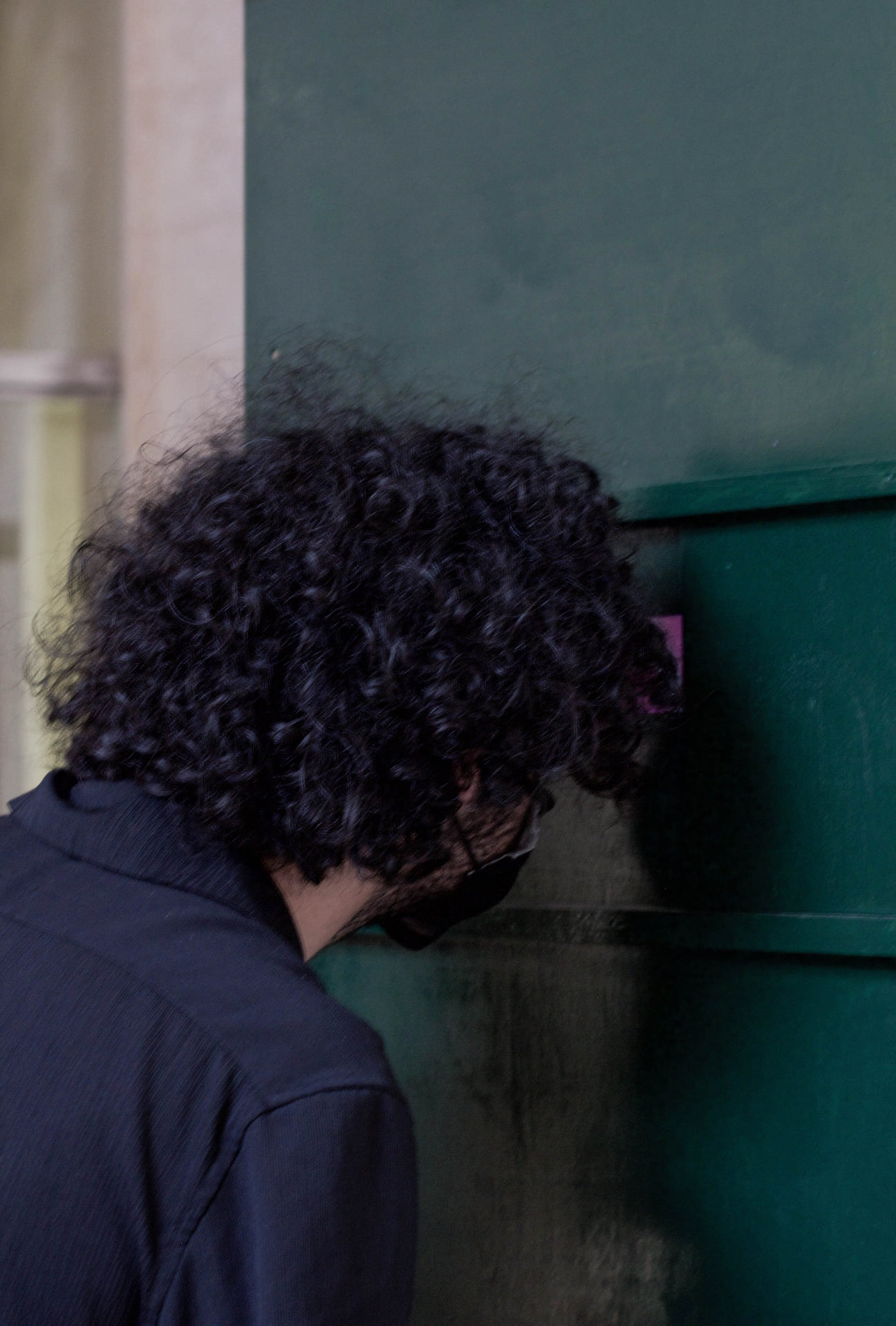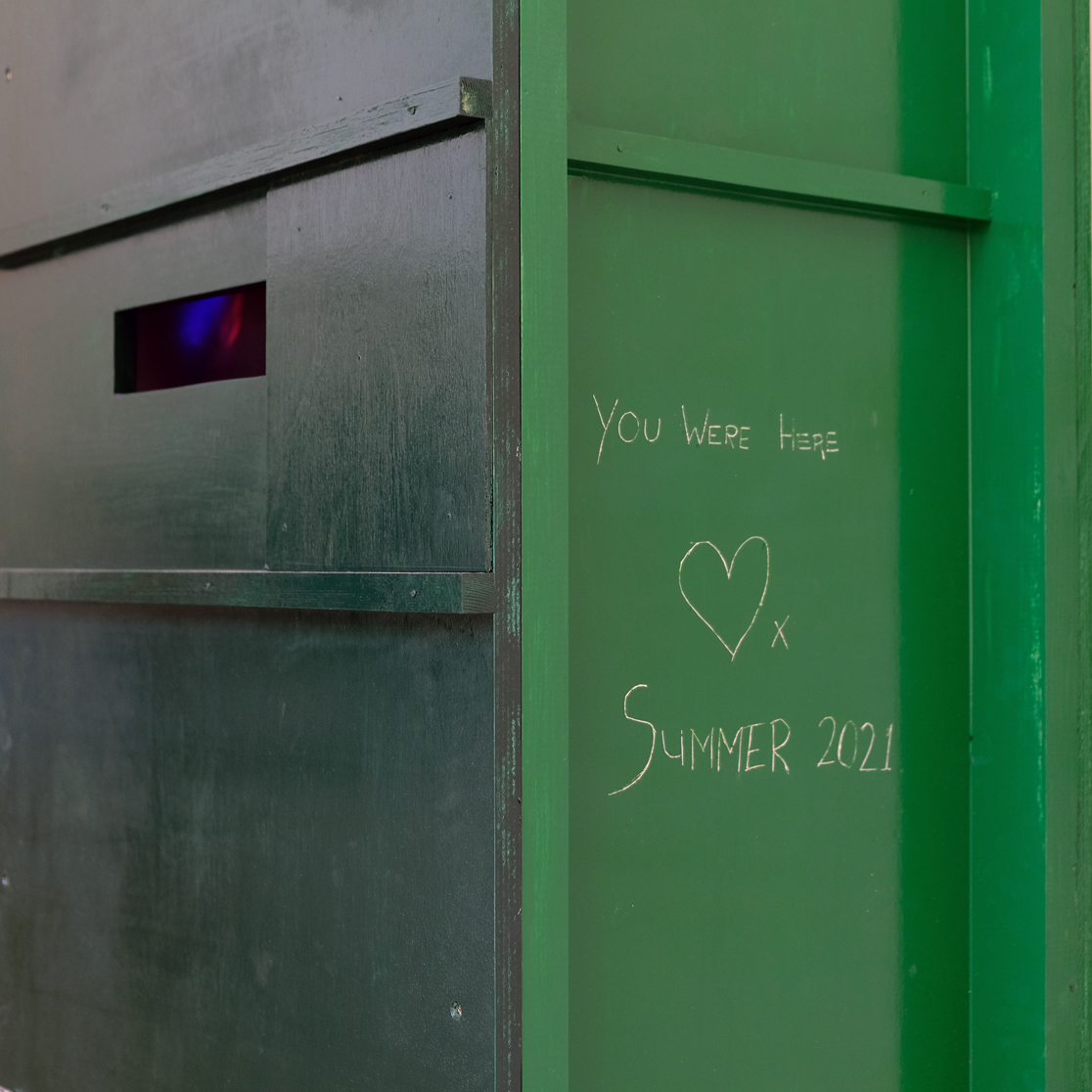Too Illegal to stay, too peculiar to take away
(2021)
40 x 60 x 230 cm
timber, paint, prints, led, photovoltaic, cardboard, rope, corrugated sheet, stone dust
shown at No Ordinary Terrain, MUŻA Malta
From the outside, the sculpture combines elements that are typical for the boathouses we find around the Maltese islands, and from the inside it takes you to the world of the local hunter huts. The work is a personal and playful take on the polemic surrounding these informal and illegal structures on the fringes. For the artist, they have become inherently part of his memory and recollection of the local landscape. Could it ever be the same without them? Is there such a thing as a pristine landscape? Would they be missed if they were simply erased?40 x 60 x 230 cm
timber, paint, prints, led, photovoltaic, cardboard, rope, corrugated sheet, stone dust
shown at No Ordinary Terrain, MUŻA Malta
(extract Francesca Mangions’ exhibition text)
NOT BEING ON THE FENCE BUT SITTING ON ONE
The title, No Ordinary Terrain seems to be a veiled invitation. It instils in the viewer a desire to look at this familiar terrain and also be able to grasp its non-ordinary features. So there is an invitation to look differently at the things around us or, rather to look more closely at our surroundings. Looking becomes an active act - one that requires presence and purpose. Through a renewed way of looking, surroundings which tend to become transparent in their prevalence, can become perceptible again. Comparably, seemingly closed, polarised positions can finally start to be unpacked.
Tom Van Malderen’s ‘Too Illegal to stay, too peculiar to take away’, sits somewhere on this territory. ‘Too Illegal to stay, too peculiar to take away’ is a sculpture that combines elements borrowed from Maltese boathouses and others from traditional local hunting huts. Boathouses and hunting huts share certain characteristics; both possess aesthetically dubious features and are in blatant breach of the law. Yet, one cannot deny that they still form part of the local landscape and the illegality of an act doesn’t mean that they cannot enter our collective consciousness.
Our understanding of ourselves in relation to the other, especially when we are dealing with national identity is determined by a process that we are all participating in. Edward Said speaks of the cultural archive, a collective store that retains sayings, stories but also other types of knowledge that we make use of and that can be used as a measure of our existence in the world. This repository is internalised by the very same people who construct it but it is then externalised through policies, laws, or popular culture.




related works: Bigilla (with Charlie Cauchi) / Wall on Walls /
hajt Tas-sejjieh-(showpiece)
photo credits: Martina Farrugia & Tom Van Malderen
photo credits: Martina Farrugia & Tom Van Malderen